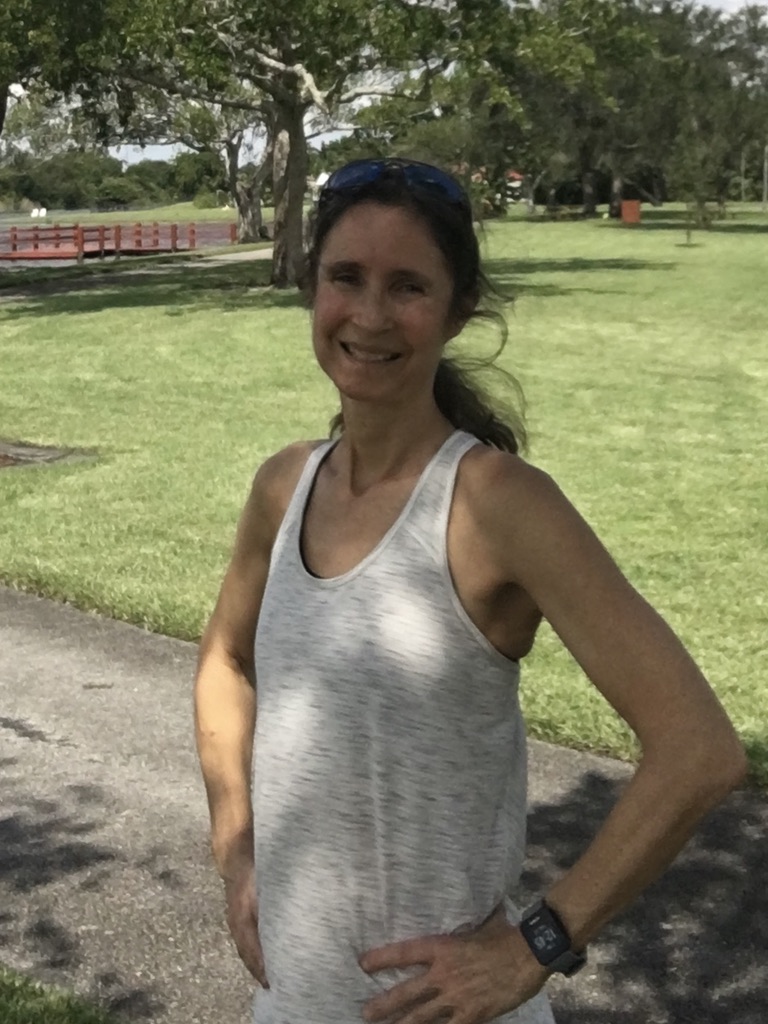“You must expect to improve over time instead of gradually breaking down as you age. You must understand that you’re supposed to feel wonderful and comfortable in your body throughout your life.”
-Sarah Warren, author of The Pain Relief Secret: How To Retrain Your Nervous System, Heal Your Body, and Overcome Chronic Pain
I first heard of this book when I heard Sarah Warren speak on the Running Rogue podcast. Since then, I’ve visited her website, read her book and have been practicing the somatic movement exercises to loosen tight muscles in my feet, calves, and back that, according to Warren, lead to plantar fasciitis.
“‘The great phase in man’s advancement is that in which he passes from unconscious to conscious control of his own mind and body.”
-F.M. Alexander
F.M. Alexander (who developed the Alexander Technique) and Moshe Feldenkrais were early pioneers in the field of “somatic education,” a general term describing methods used to address physiological issues by changing habitual motor patterns and sensorimotor awareness. What does all this mean? Well, the book goes into a nice amount of detail on how the nervous system works, including illustrations showing different parts of the brain, muscles and nerves. It’s presented in such a way that you don’t have to become a neuroscientist to understand it.
The basic principal underlying Somatic Education is that most painful conditions are caused by learned muscle patterns. Your muscles are controlled by your nervous system. When your nervous system notices that you’re repeating movements or postures over and over again, it makes those movements automatic. It does this to be more efficient- you wouldn’t want to have to figure out which muscles to contract every time you try to walk. Eventually when the movement (or posture) becomes completely automatic, control over it shifts to a different part of the brain, leaving the part of your brain that consciously focuses on movement free to learn new things.
So far so good! But, you can also hold your muscles in an unnatural positions. Sitting all day, hunching your shoulders over a computer, or holding a body part in a tensed position for another reason (such as, to protect it from the pain of an injury) are all postures and movements that your nervous system becomes efficient at as well. It notices that these movements are repeated and will start to contract those muscles all the time. Furthermore, sensory adaptation will come in to play- the same way you stop noticing a smell after a while, you will stop feeling how tense those muscles are. Their state of permanent contraction will eventually feel normal.
This state of perpetual, and unconscious muscle tension, according to the theory of Somatic Movement, is responsible for most of the painful conditions people experience as they age- including carpal tunnel syndrome, sciatica, plantar fasciitis, TMJ pain, tension headaches, frozen shoulder… to name just a few.
“Practicing Clinical Somatics exercises will help you regain conscious control of your mind and body and give you the freedom to change old habits that have been keeping you in pain.”
-Sarah Warren
Thomas Hanna took the ideas of Alexander, Feldenkrais, and others in the field and developed a series of movements designed to reset the nervous system. These exercises are the basis of Somatic Education. They involve very slow eccentric contractions- which is when your muscles are contracting under a load; for example when you’re lowering a dumbbell while doing bicep curls, that’s an eccentric contraction for your biceps muscle. The movement is performed very slowly so your nervous system has a chance to sense the movement. One of the movements I’ve been doing is for the calf, and it’s easy to describe.
You start with your feet two to three feet away from a wall and lean forward with your hands on the wall. You should feel a very slight stretch- if it’s too much or too little, you adjust your feet accordingly. Then you raise up on the balls of your feet so your calves are contracted, and then slowly, slwoly lower down until your heels are on the floor. You can see how the calf muscles are eccentrically contracted under a load this way.
These exercises do not involve strengthening or stretching- as a matter of fact, Warren explains that stretching does not help loosen tight muscles, at least not permanently. The muscles may temporarily loosen up by being stretched, but the only way to permanently loosen them is to reset the nervous system.
In Warren’s book she provides links to videos demonstrating each routine, and in the video she talks you through it so you understand how slowly to perform each movement- it’s really slow. The plantar fasciitis routine involves loosening your calves, feet, and low back. She actually says plantar fasciitis stems from tension in your low back.
“You must learn to be self-sufficient, and appreciate how incredible it is to be able to take steps to improve your health instead of hoping that others will fix your problems for you.”
-Sarah Warren
I became interested in Somatic Education because I’ve been looking for something to help with my plantar fasciitis. I’ve been struggling with it for about six months now. Originally I took some time off running and received shockwave treatments. My doctor felt that the tissue had softened up enough for me to return to running, but I have lingering pain that I haven’t been able to get rid of, in spite of rest, stretching, massage, and various other treatments. So… did the Somatic Movement exercises work???
I wish I could say that after a week of doing the exercises, all my pain is gone. But in the book, Susan says that since you’ve spent your whole life developing the patterns that led to your pain, it’s not going to go away overnight or in a couple weeks. The information I’ve learned from this book has made me aware of how much tension I’m carrying in that foot constantly, which most likely started as a reaction from the pain of stepping down on a heel spur. It’s helped me to recognize that the tension is there, and when I step down I’ll remind myself to relax, that there’s nothing wrong and to walk normally. The deeper work of releasing the muscles in my low back and calves will be on ongoing process, but I believe that it’s the key to eventually recovering. You’ll be hearing plenty more about my foot in the future, have no fear. I’ll be doing the Somatic Movement routine for plantar fasciitis daily until this problem is resolved.
As we grow older, our bodies- and our lives- should continue to improve, right up until the very end. I believe that all of us, in our hearts, feel that this is how life really should be lived.
-Dr. Thomas Hanna, Founder, Clinical Somatic Education
I recommend this book to… everyone. It has all the tools you need to learn how to resolve your own issues, on your own, in your own home. The book has a link to twelve different videos, which clearly take you through the movements. There’s also a chapter on lifestyle changes you can make, as well as practices you can incorporate into your everyday life to become aware of how you’re moving and holding tension in your body. Here are links to the resources if you want to check them out! Even as athletes, I think we accept too readily the notion that our bodies will break down as we age. This approach offers a different and exciting vision for our future.
Running Rogue podcast episode with Sarah Warren






18 Responses
Wow. Fascinating. I love the quotes from Sarah that you cited. I think you’re right about our expectation that we’ll break down with age. I hope Somatic movement helps you resolve the PF. I’m putting this on my reading list.
Yes this really is a fascinating subject. I hadn’t heard of it until recently (when I heard her interviewed on a podcast) but everything in the book makes a ton of sense.
My foot pain is ever present… sometimes bad, sometimes not so bad. I have read lots and seen the DRs. Gotten shots, taped, massages, PT, etc. Maybe surgery will fix but maybe not so i am choosing to ignore the pain… for now. It only hurts when I run…which is my life and sanity.
Darlene, did anyone ever give you a diagnosis? There must be a solution to this! I know how frustrating it is… it seems like you’ve tried everything, but there really is an answer out there if you can find it.
You have explained everything well! I get lost in “technical talk,” so thank you! I love the quotes you featured, especially Dr.Hanna’s one about our bodies improving as we age. I’m totally on board with that! Looking forward to following your progress:-)
Okay, I’m glad I didn’t make it TOO technical. Yes, I love that quote from Dr. Hanna- I think runners are well ahead of the general population on that idea.
This was really interesting! I would definitely read this book. I am glad that it gave you some ideas on your injuries
It did! I’ll give periodic updates on progress as I go on.
This sounds so interesting and I want to read this book! I’ve read about this idea a bit before and heard it discussed on podcasts but never really given it a try. I know that I have some movement patterns that are not ideal (I’ve had lots of injuries, surgery, and a c-section that all likely changed how I move) so it would be great to get on top of any issues so they don’t become bigger problems.
Yes, now is the time! Easier to change an ingrained habit of five-ten years than fifty years.
This is so interesting. I really want to check out this book. I’m sure after 30 years of running I’ve developed a lot of movement patterns that could be improved.
I hope you check it out and find it helpful! It’s full of great information.
These look like some very good resources on pain management. I have never heard of somatic education before, but it makes complete sense. I dealt with hip/piriformis pain for almost 2 years. I tried everything – PT, chiropractor, my family doctor…nothing worked. I finally went to an orthopedic surgeon who (surprisingly) did not want to operate. He gave me some exercises and the pain went away. Gradually. I think I could use exercises for my calf, ankles, and feet. I am going to check out the website. Thanks!
Yes, check it out! I hope it helps you.
Fascinating! Thank you so much for giving such a succinct description of what somatic exercising is all about and what it can do for the aging body.
You’re welcome- check out Sarah Warren’s website if you want to learn more! It really is a fascinating subject.